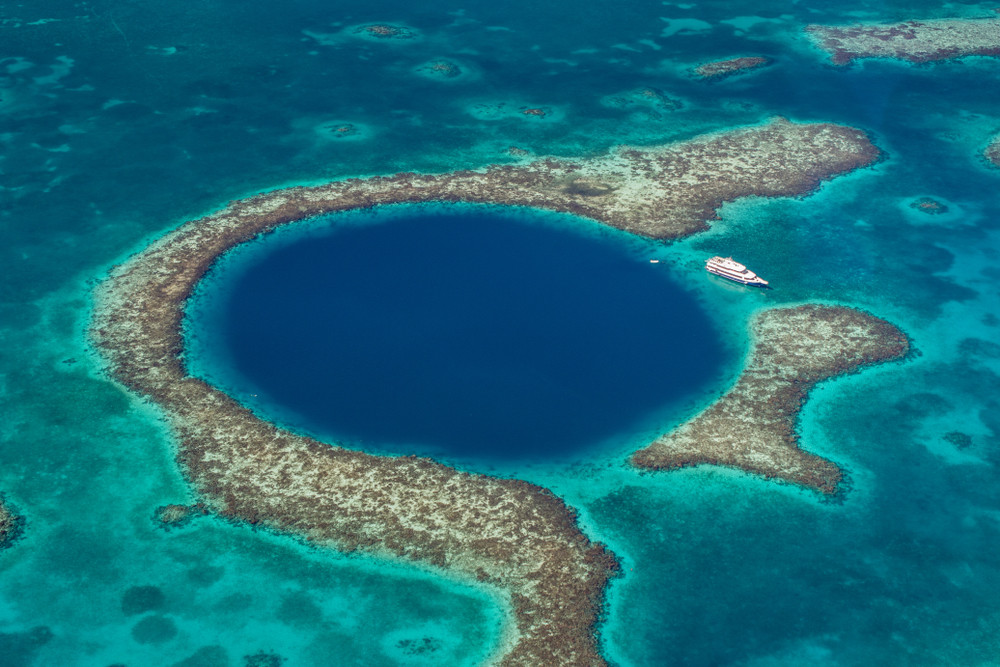Located in Belize, the Great Blue Hole is one of the most popular dive sites in the world. Stretching 300 meters wide and over 100 meters deep, this sinkhole intimidates even the most experienced divers.
It is believed that the hole was formed back during the last Ice Age when sea levels were much lower than they are now. The hole is actually a couple very large caverns and cave systems that got flooded as sea levels began to rise approximately 15,000 years ago. Captivating the eyes of many, the stalactites, stalagmites and rock formations that have formed over the years make you want to stay and explore every crack and crevice you see. Some of the stalactites and stalagmites even reach up to 40 ft. (12 m) long.
Jacques Cousteau, renown French marine biologist and explorer, was the first to discover this hole in 1971. He descended into its depths with his crew and upon return named it one of the top 10 best diving spots on the planet. Not only is the dive into the hole fascinating but it is also a part of the Belize Barrier Reef which is the second largest barrier reef and one of the most pristine marine ecosystems in the world.
Due to its location and formation the Great Blue Hole is not home to many species but you can occasionally see some sharks, Pederson’s shrimp, neon gobies, angelfish, groupers, purple seafans, and more! The outstanding visibility even at such great depths, allows divers to navigate caves, overhangs, dunes, and bedrock ledges without the use of flashlights.
BEWARE: The Great Blue Hole is reputed for having the highest diver fatality rate than any other dive site in the world with around 130-200 diver deaths in recent years.
What makes the hole so dangerous? Most people believe the direct decent into a giant hole is the scariest part of this dive but what people don’t come equipped for is the arches and tunnels at such depths. If you don’t know how to properly navigate these complex underwater systems then you can quickly find yourself in a very scary situation.

